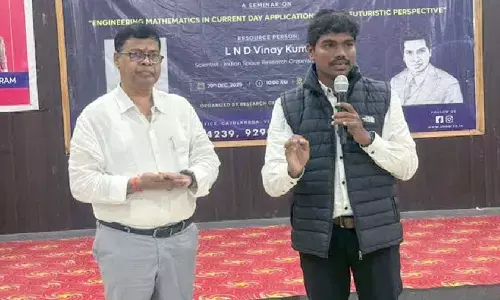5 fabrics to purchase when visiting Gujarat

5 fabrics to purchase when visiting Gujarat
A Gujarat tour entails much more than just visiting places; it also includes trying local cuisine, shopping for unique crafts, and art, and meeting artisans.
Known for its religious sites, beautiful landscape, delicious cuisine, diverse culture, and excellent shopping, the fifth-largest state in India, Gujarat, is situated in the western zone of the country. Gandhinagar is the capital of Gujarat, while Ahmedabad is the biggest city and Rajkot, Surat, and Vadodara are among the next great cities.
Gujarat's history is renowned for its abundance of artistic expressions, including dance, music, and handicrafts, among others. You can purchase a variety of local handicrafts and furnishings during your stay, including mirror work, metalwork, embroidered clothing, jewellery, table mats, bedsheets, cushions, pillow covers, and more.
In addition to its rich cultural and artistic diversity, Gujarat hosts numerous festivals that exemplify the state's true vibrancy, including the Kite Festival, Rann Utsav, Rathyatra, Navratri, and Diwali.
Gujarat is renowned for its diverse range of textiles, which bear a strong connection to the state's heritage, history, and legacy. The quality is undoubtedly exceptional and will leave you in awe; you will find yourself filling numerous shopping bags!
Here are 5 fabrics to buy when visiting Gujarat:
Bandhani
This textile has been in style since the time of our grandmother and is among the oldest selling. The fabrication phase involves the application of the tie-and-dye technique. This procedure involves the application of traditional motif work and gold checks to the soft mulmul cloth to impart a heavier weight.
Following a pattern, the entire cloth is threaded with minuscule knots; once this is completed, it is submerged in a base colour; the cycle continues: tie and dye. This procedure is iterated until the desired outcome, namely the colour and pattern, is not achieved. The frequency and intricacy of the design dictate the cost of the bandhani fabric. In addition to the fine cotton and silk blended into this fabric, crepe silk, chiffon, and georgette are also available for purchase.
Patola
This textile originated in the Gujarati village of 'Patan' and was established by the Salvi family, to delve a little into its history. This was initially manufactured exclusively by this family. During the reign of King Kumar Pal of the Solanki dynasty, the Salvi family, who were originally from Maharashtra, relocated to Karnataka and then Gujarat.
This is crafted from pure gold zari and pure mulberry spun silk. Primarily yellow, green, blue, red, black, and white hues are utilised in the production of this textile. These sarees and dress materials are handwoven and feature traditional motifs. Dancing girls, flowers, parrots, and leaves comprise the patterns. Weaving is accomplished through the utilisation of traditional looms, natural colours, and vegetable extracts. These hues are excessively vibrant and do not fade easily.
Dhamadka and Ajrakh
This fabric was created with wooden blocks. The wooden blocks range in thickness from 1.5 to 3 inches. The design is first pricked on the wooden block and then shaped with a chisel. Then, simply the blocks are dipped in different colours and stamped on the fabric to create a beautiful design. After the stamping is complete, the fabric is allowed to dry in the nearby river.
It is said that river water brightens the fabric's colours significantly. There are many mix-and-match colours available, such as yellow, maroon, red, blue, and green, with tiny white or contrasting dots as patterns.
Mashru
This is a mixed fabric consisting of silk and cotton. Originally, this fabric was manufactured throughout India, but it is now limited to Gujarat state, with Patan district being one of the major areas where Mashru is manufactured in large quantities. This is primarily used by Muslims, as they are not permitted to wear pure silk.
This weaving technique has been used for many years in Arab countries and Iraq. This technique uses bold colours and a variety of styles, including extra warp threads, ikkat patterns in stripes, and depression on the pit loom.
Dhurries
Dhurries are traditional weavings done by Gujarati villagers. They make blankets, carpets, and rugs. These dhurries are very popular on many continents. These are woven by hand on pit looms using traditional methods. This is one of the most unique handcrafting techniques, and it requires a lot of effort. These rugs and blankets are beautifully coloured and woven.
Kambals, also known as fine dhablas, are typically black or dark grey in colour. Fringes on both sides are made of small, woven red or green checks. Dhablos are quite thick, and the colours are usually light grey or white. The most common applications for this are floor coverings, carpets, and blankets.
Wishing you a wonderful shopping experience!




















